
The heart of your lighting plan should be some kind of kerosene lantern. They start at about $7 each, and top out around $100. This is a $50 Dietz Jupiter with a 7/8″ wick.
$14 on Ebay
No Lanterns at Your Walmart?
4 White Lanterns for $35, 12 for $80, Other Colors & Sizes
Dietz Cooker Lantern $35
Jupiter Lantern Amazon $48, Ebay $45
Railroad Lantern
Reflector Oil Lamp at Lehmans $24.95
$20 for 33 feet of 1/2″ wick for Standard/Walmart Lanterns
5/8ths Wick for Cooker Lantern
7/8ths Wick for Glass Bottom Lanterns
I try to take nothing for granted. For some people it is probably a no brainer to have a couple hurricane kerosene lanterns on hand, and I’m sure a lot of you have at least one Coleman white gas lantern with mantles. But did you know that both of both of those will work with much more common fuels, and have you thought about whether you should store some extra wicks and mantles? How long does fuel last? How cheap can you get extra lanterns, and what is the best choice for fuel conservation? There are also some really good and cheap LED options for survival lighting these days as well. So for this week we take a opportunity to consider a few inexpensive approaches to light. There is a pretty good chance you will want to see at night once the lights go out. And you may feel confident that you have a plan for emergency lighting, but what will you do when the lights go out for good?
This article is way longer and has many more pictures than I planned, because like almost everything else that I thought I knew about survival, lighting is no so simple.
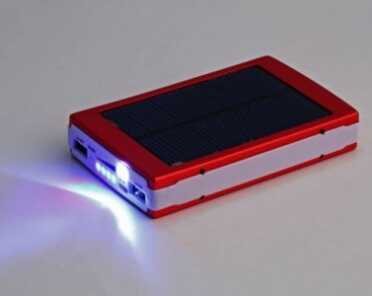
I’m not Amish, and I would never say to rely only on kerosene lanterns when there are technological helpers that you can buy today for cheap. This single LED flashlight is really a solar powered cellphone charger, but extremely useful just as a neverdie flashlight…for $14.
Before I get started on what I discovered with lanterns, which should be the meat and potatoes of your survival lighting, I’d like to turn you on to some really cool flashlight options. I already covered rechargeable batteries here at length, and as several commenters noted, all of the rechargeable batteries are sketchy in their long term reliability. I have also many times linked in this article to 12 volt LED bulbs to go with your solar generator systems, which I have also covered at length. Solar is great, but it is really high budget, and not everyone reading this column is on a high budget. I try to focus on minimums, and for lighting, say you get a leak in the middle of the night and you have to go outside to fix it, I found a cool $14 single LED flashlight connected to a 5000 mah battery pack and solar panel. As a backup phone charger it isn’t super, but as an emergency flashlight it works great. My kids use it as a bedtime reading flashight and they last for months without a recharge. It isn’t a lot of light, but it has fewer failure points than a flashlight and rechargeables, and it has a solar panel built in!

I have been a big proponent of using solar to power 12v LED lights, but the skies more and more do not lend themselves to solar, because of solar radiation management programs going on in our skies.
Just as an aside, for my own preparations I am concerned with relying on solar. That is why I decided to spend so much time with these lanterns, because I want to have light on those long winter nights, and without electricity at all, it isn’t going to be possible without a plan B. The problem with solar is that the active Solar Radiation Management programs in our skies have caused a 20-50% reduction in how much light reaches the planet. It is called Global Dimming,” and as I have said in my articles here before, I think that ultimately they are going to try to blot out the sun by busting underground volcanoes, worldwide. That would mean no solar, for a long time. I also have a wind turbine experiment I have been working on, but it seems that part of the weather modification fallout of late has also been Global Stilling, which is a reduction in the overall global wind speed. At this point I’m pulling my hair out of my head because without any electricity at all, communications will be challenging, and I want to know what the heck is going on out there.
At least for this article we can address the issue of light. Because regardless of how much power we’ll be able to get from the sun, electronics eventually fail. In my experience that is a hard lesson I have had to learn in life. Usually it isn’t that the components themselves fail. It is that they drop, or get wet, or some part falls off that should not have done so. So from a survival standpoint, I think we should all plan to use our electronics first, and that includes lights. But at some point we should all have a plan B.
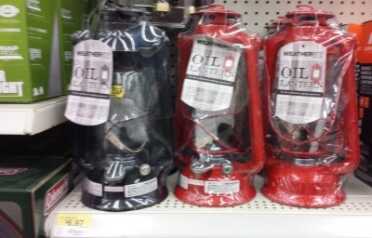
These kerosene lanterns are available at most Walmarts in the camping section. They come with an extra wick and a fuel funnel.
After the initial pandemonium, when a lot of people are going to die, I think that fossil fuels will be plentiful. All of the cars will have gasoline in them, and if you have the tools to use that gas to your benefit, it adds up to a lot of light and even heat (see my article on the H-45 stove). Diesel fuel is less common in a suburban neighborhood, but it is even more flexible and easier to use than gasoline. Home heating is interchangeable with diesel, and in the Northeast, most homes have 200 gallons or more on hand. Considering that in the 1800s there was enough commerce in the world to refine and transport fuel for lights and heat to all of the population centers in the US, my guess is that commerce will eventually come back to that point again. For light, as you’ll see from my experiments, a little fuel goes a long long long way, if you have the right tools.
The $7 Survival Lantern
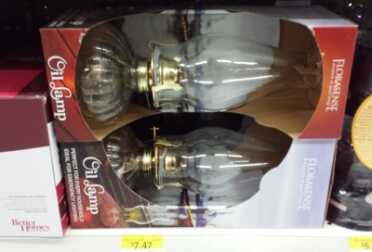
In South Florida these 7/8″ wick glass fount lanterns are available in the candle section of Walmart year round. The buner assembly seems to be the same as more expensive options online.
What I don’t think is going to survive after the collapse is the manufacturing of cheap goods, and right now you can get a 100% top of the line hurricane lantern at Walmart for $7. It comes with an extra piece of wick and a fuel funnel. Then, if you buy enough wick ($20 for 33 feet), it will light your nights as long as you can get the fuel. I also bought some lanterns online under the name Dietz and V&O, and they are sold under a number of other brands, but they are for the most part the same. All made in Asia, most likely in the same factory with the same machines, and though the globe may look different and the height of the lantern may be different, they for the most part use the same burner, in one of a few different wick sizes. You can pay $30 for a hurricane lantern or you can pay $7 for a hurricane lantern. In my experience, the best of the lot is the Walmart lantern.
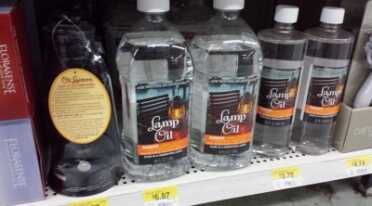
I tested Walmart lamp oil in all of my lanterns in all wick sizes and it worked just fine, despite what you’ll read on the internet that wicks over 1/2″ clog up from these liquid paraffin fuels. The problem is that they are over $10 per gallon.
The same is true of the kerosene lanterns with the glass bases. There are a ton of used versions of these lanterns on Ebay, many of them dating back to the 1800s, but most of them come without chimneys, and the chimney is as expensive as a brand new complete oil lamp at Walmart. As you can see from the pictures, I used the Walmart lamps for my tests, because all of the burners seem to be the same. I also bought a few household type lamps new on Amazon at twice the Walmart price, but other than specialty types of holders, as a pure survival tool they all seem to be the same.
If your local Walmart doesn’t have these lanterns in the camping section, I have posted a link above to a seller on Ebay offering 4 of those same lanterns for $35, and 12 of them for $80. I linked to the white ones but they also come in red. These don’t appear to come with a fuel funnel, so you should get one to keep with your lanterns.
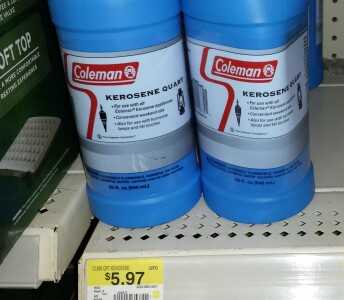
Kerosene at Walmart is twice that price, but I’ve heard that you can get “pink” kerosene for ~$5 a gallon.
As you can see from the pictures, I got a few of the specialty Dietz lanterns. The cooking lantern is kind of nifty. It comes with a little cookset and the top is meant to come off and be replaced with a pot holder rack. It works great I cooked some powdered eggs and beans. I also tried a “Jupiter” lantern, which has a base that holds 4 cups of fuel. As I write this it has been burning it’s 7/8ths wick on high for about 65 hours, and it is still going strong. If you have an issue with being able to start fires, it would probably be a good tool to leave on low. I don’t know know about using it as a small heater. I am going to do a carbon monoxide article soon I hope. The lawyers have created an environment of fear, where everything has to have a warning label, but I’m curious just how much carbon monoxide is a concern with small flames.
The other lantern I tried is the Dietz railroad lantern. It’s funny because I didn’t realize that this lantern was created to duplicate a small flame that is used for signalling, not for seeing. The burner has higher lips, and I found that you can get a really bright flame out of it without a lot of smoke. The cup of fuel ran out much sooner, like 15 hours in, and the glass will have to be cleaned, but it was substantively more light, FYI.
Burning Gasoline and Diesel
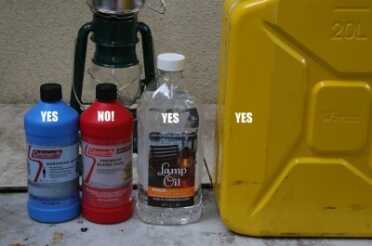
For most of us living in urban and suburban areas, kerosene by the gallon is not available. Fortunately regular diesel fuel and home heating oil burns just as clean and clear in these lanterns as kerosene. You cannot use gasoline or Coleman white gas fuel though.
There are essentially two types of lanterns that you should consider for survival. If you live in suburbia, or in a city, and you are willing to put away some fuel, I think that the regular cheap kerosene lamps above will be your best choice. They were originally made for kerosene, but will burn liquid paraffin just as well, which is the clear lamp oil you see in the stores, as well as the citronella versions. If you read stuff online it says that the liquid paraffin can’t be used with wicks more than 1/2 inch, but I burned the Walmart one in my 7/8 inch wick lanterns just fine. The problem with storing a lot of that oil, as well as a lot of kerosene these days, is that they are expensive. In my tests diesel fuel burns just as clean and lasts possibly even longer in these lanterns as their intended fuels, and it is no more or less dangerous than kerosene to handle and burn. Cold can make diesel fuel gel up, but I put a can in the freezer for a day and my 1/2 inch wick was still able to wick it up and burn it. Diesel has a wide range of quality, and home heating oil is also diesel, so results may vary when it comes to gelling it. I have personally seen problems with keeping these lanterns lit in extreme cold. We use them for the big Channuka Menorahs on campus, and they can give you fits.

I personally have had fits with keeping wick lanterns lit in extreme cold in the Boston area, but for these tests I couldn’t get diesel to gel in my freezer to the point where it wouldn’t reliably wick in a 1/2″ cotton wick.
The fuels that kerosene lanterns absolutely shouldn’t be used to burn are gasoline and Coleman fuel. Both are just too volatile for a system that wasn’t made for pressure. If you put gasoline into a wick style lantern, you are asking for an uncontrollable fire. I by mistake put Coleman fuel into one of these lanterns and it blew itself out from the gas escaping from from the heated up reservoir through the burner. This is not something you want to experiment with, even if gasoline is the only fuel you have available.
For that reason, I think it is a good idea to have on hand a Coleman “Duel Fuel” lantern. Technically all Coleman lanterns will burn both Coleman fuel, which is distilled gasoline, and regular unleaded gasoline. You just have to clean he burner fairly often, which involves taking apart the lantern. The duel fuel lanterns are I guess made to handle the gasoline with less upkeep? There isn’t a ton of information on them, but you can usually find them at Walmart.
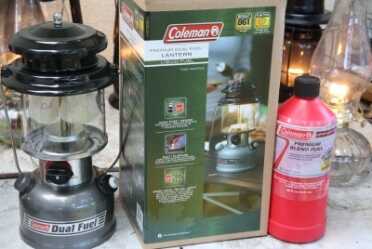
The problem with kerosene lanterns is that the gas tanks of all the cars outside have gasoline in them, not diesel. For that reason, I would get a Coleman “Duel Fuel” lantern and plenty of mantles. For fuel conservation it is not a great option, because you’ll get only about 3 hours from a cup of fuel compared to 20 hours in a hurricane lantern, but it can make use out of all that gasoline that would go to waste if you only have kerosene lanterns.
So that’s the rub really, for most of us living in suburban and urban environments. Kerosene lanterns are the better choice, but most likely your local available fuel will be gasoline, which they can’t burn.
Fuel Economy
In my tests focused mostly on the kerosene lamps, and I compared 1 cup of diesel to one cup of kerosene to one cup of liquid paraffin. For the most part, regardless of big or little the actual lantern may be, the wicks are two basic sizes in the cheap lanterns, 1/2 inch and 7/8ths inch. All three fuels burned in the 1/2″ wick lanterns for about 20 hours straight. In the lanterns with the 7/8ths wicks, the ones with the glass bases and chimneys, the burn time was about 2 hours less. If any of the fuels had an edge for burn time it was the diesel. The tests were done in South Florida in October, so not a chilly clime. The numbers aren’t exact, because even when you cut your wicks straight they all burn as slightly lopsided shapes, and this allows you to only adjust them so high without them smoking your glass. One of the commenters here noted that if you cut the corners off it won’t do it as bad. At 20 hours they started to go out, and the 7/8ths glass lanterns had been lit about two hours later than the 1/2″ wick lanterns.
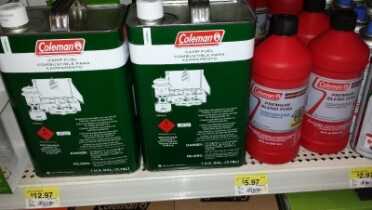
White gas, which is really just distilled gasoline, is really expensive, but it stores fairly well. There are Youtube videos demonstrating how to distill your own gasoline.
Compare that to the Coleman lantern on full blast. It has over 800 lumens, compared to maybe 10 for the 1/2″ wick and 12-15 for the 7/8ths wick kerosene lanterns. But one cup of Coleman fuel lasted just over 3 hours. I haven’t tried the same experiment on low, but I doubt it would go more than another hour or so. My take is that Coleman lanterns are about available fuel, not fuel economy. You can read just fine with a 1/2″ wick kerosene lantern, and you can find your way through the woods with it as well. The mantles on Coleman lanterns are a little too dainty for my survival tastes as well, but I’m getting a supply of them, just in case.
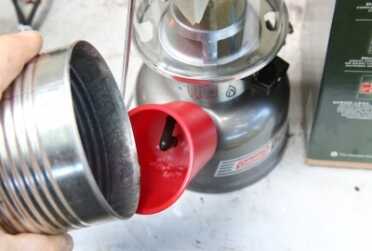
The Duel Fuel lantern comes with a filter funnel to get some of the nonvolatiles out of the gasoline.
That is also why I didn’t test the Aladdin Lantern. I had one years ago and they are amazingly bright for a zero pressure kerosene lantern. But the wicks are expensive and almost as dainty as Coleman mantles. The Amish give Aladdin lanterns a market, because as a daily use lantern they are great. But after the bubble bursts the Amish aren’t going to have an easy time getting more mantles, and I am sure they all have regular wick lanterns in the basement as backups. Flat wicks aren’t terribly bright, but they work and the mechanism is simple. we got some good comments on this article and I’m going to follow it up with an overview of Aladdin and the other “center draft” lamp, the Rayo. If you buy the proprietary products for them now, though, both will be much better for dinner lamps, parlor lamps, etc.
There are also several lanterns from Coleman, Petromax and others that are pressure systems capable of using kerosene. I didn’t buy any because for one, I have no idea if they’ll burn diesel reliably and safely, and two, if I have diesel, why wouldn’t I conserve it by using wick lanterns that are plenty bright? Those pressure kerosene lanterns are primarily for markets in the 3rd world where kerosene is still sold at competitive prices to gasoline. Here in the US I have yet to see it less than several dollars per gallon more than gasoline and diesel. Supposedly there is a pink version that is cheaper, but I have yet to find it.
Storing Fuels
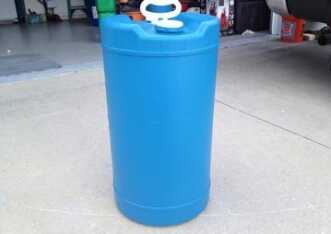
Any HDPE container can store fuels. These 15 gallon cans use bung wrench camps, and you can usually get them for $20 each or so. Full they are under 100 lbs and are very manageable.
I hope to construct a full article on this subject, because like everything else, you just don’t know unless you try. I found out from a nice interview with emergency prepper extraordinaire Steven Harris that any HDPE container can be used to store fuel. Gas cans have gotten more and more complex over the years and more and more expensive as well. For hurricane season down here Walmart brings in $12 cans and I bought a bunch of them, but I have been in Walmart in the north where you can’t get a 5 gallon can for under $30. I paid like $30 each for my steel 5 gallon Gerry cans as well. A more affordable yet manageable size is a 15 gallon drum with bung caps. When you can find them they go for less than $20 each in quantity, and full they will be under 100 pounds. 30 and 55 gallon drums are great too, but they sure aren’t traveling with you.
Steven also turned me on to Pri fuel storage additive. Supposedly it is superior to the Stabil you see on the shelves at the store, so I’m trying it. I didn’t know that diesel fuel actually gets mold in it without treatment. Check out the Pri website if you want to read up on it. I bought some on Amazon and am putting it in my fuel now.

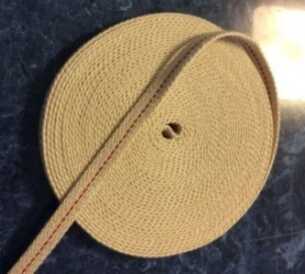
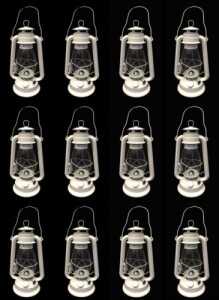
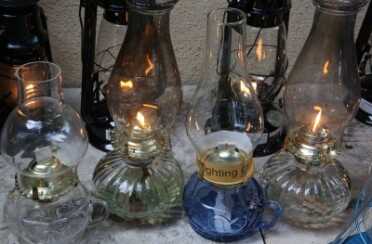
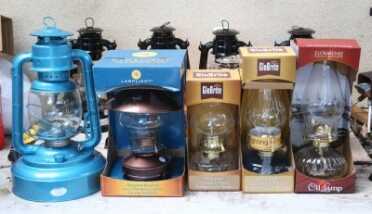
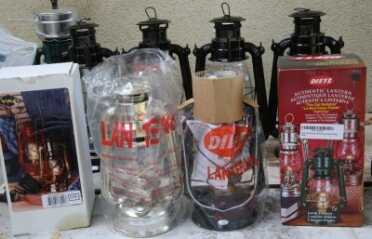
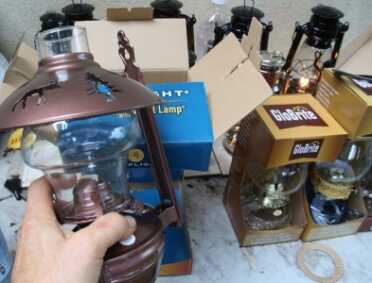
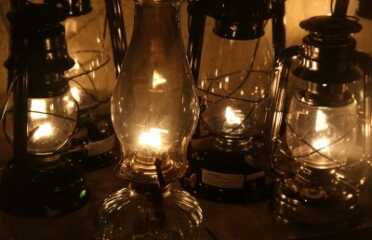
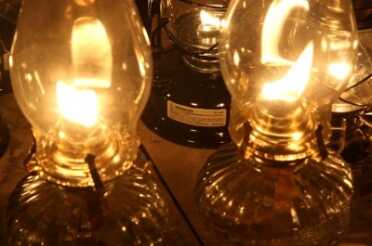
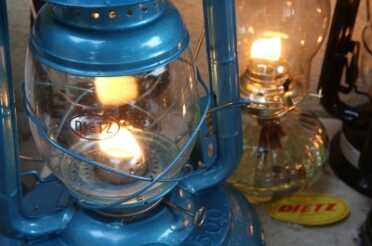
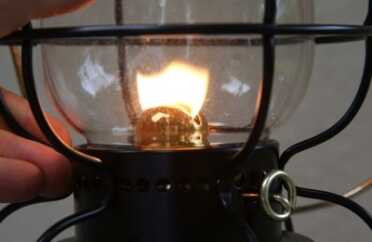
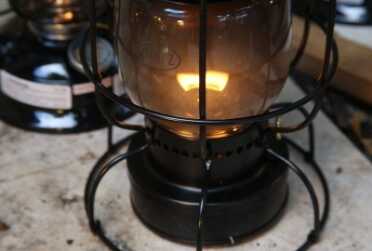
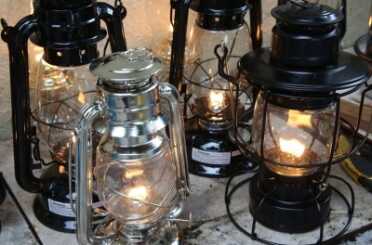

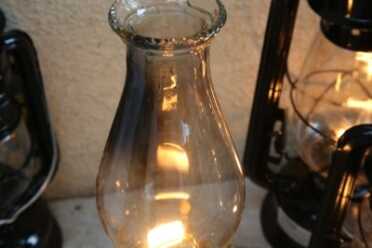
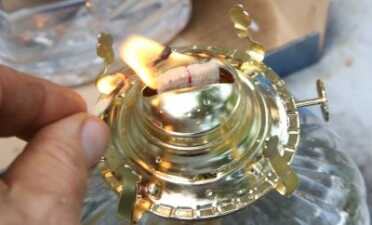
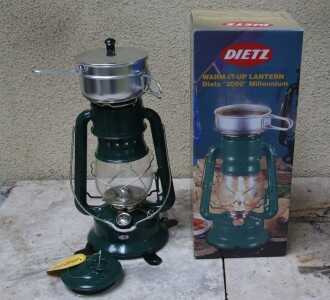
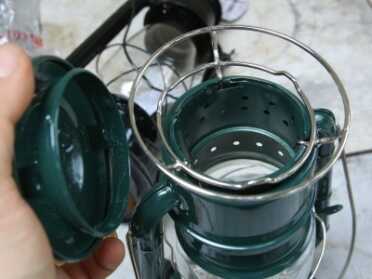

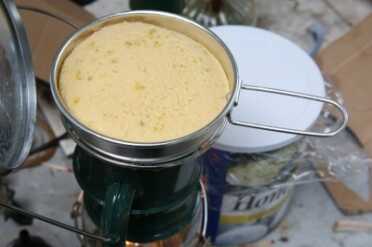


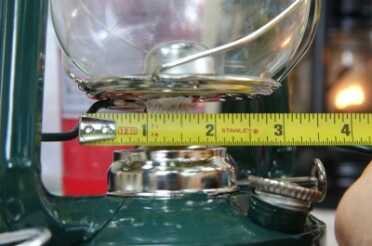
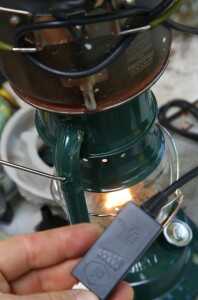
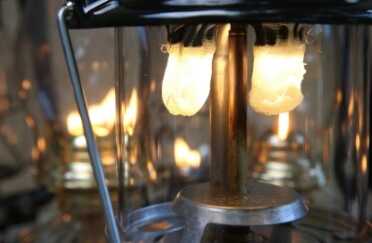
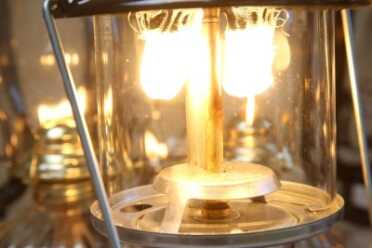
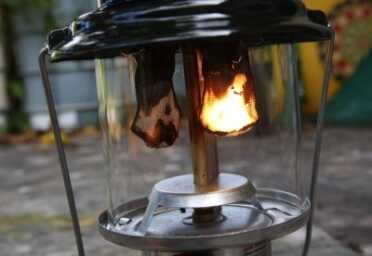
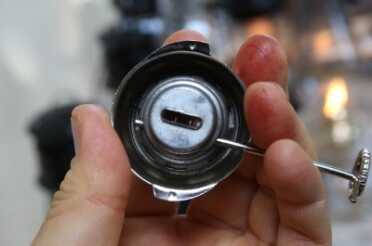
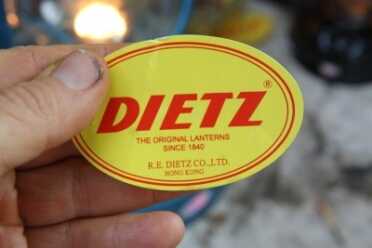
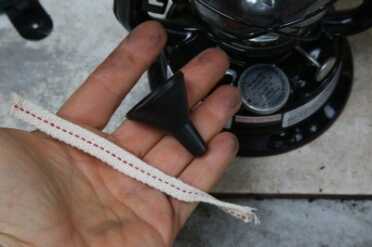
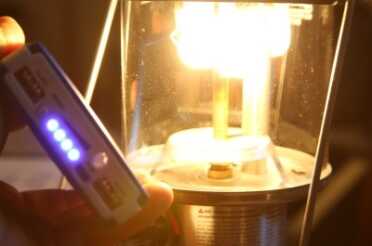
Hello, The Dietz 2000 millennium cooker has been confirmed to now take a wick that is slightly under 3/4 inch from the factory (white with no stripe) by both me on mine and by Lehmans who emailed me the confirmation. Lehmans then took their 3/4 inch wick and emailed me it works. This is big because it is much more heat/btu\’s than the 5/8 inch wick and the 3/4 is as large as it can fit in that burner. Smart move by R. E. Dietz (no longer owned by the Dietz family but I\’m assuming the Mak family is Chinese). The best selling Dietz according to Lehmans is the \”original 76\” which is made to the same design as the Feuerhand 276 (still made in Germany and very high quality with Suprax boro-silicate globe). Beware of cheap Chinese lantern burners when replacing wicks. The ones designed to take 1/2 inch wicks are normally ok however these are mostly designed to take metric wicks not stocked by places like W.T. Kirkman or Lehman\’s. My seller of choice on ebay out of China offers 8mm, 10mm, 11.2mm, 15mm, and 20mm. Some of the small lanters will malfunciton when advancing/retracting the wick if not using metric wicks. Best regards, Mike
Hello, The Dietz 2000 millennium cooker has been confirmed to now take a wick that is slightly under 3/4 inch from the factory (white with no stripe) by both me on mine and by Lehmans who emailed me the confirmation. Lehmans then took their 3/4 inch wick and emailed me it works. This is big because it is much more heat/btu’s than the 5/8 inch wick and the 3/4 is as large as it can fit in that burner. Smart move by R. E. Dietz (no longer owned by the Dietz family but I’m assuming the Mak family is Chinese). The best selling Dietz according to Lehmans is the “original 76” which is made to the same design as the Feuerhand 276 (still made in Germany and very high quality with Suprax boro-silicate globe). Beware of cheap Chinese lantern burners when replacing wicks. The ones designed to take 1/2 inch wicks are normally ok however these are mostly designed to take metric wicks not stocked by places like W.T. Kirkman or Lehman’s. My seller of choice on ebay out of China offers 8mm, 10mm, 11.2mm, 15mm, and 20mm. Some of the small lanters will malfunciton when advancing/retracting the wick if not using metric wicks. Best regards, Mike
What is the BEST and BRIGHTEST top ten of hurricane lamps when leaving price out of the picture? I don’t want the most expensive but I don’t want something Cheap that won’t last long either. This is a gift. Lehmans’s , Garrett Wade, and other companies are not answering this question. I need HELP!!!
I like to peruse E-bay, Etsy, auctions, thrift stores, yard sales, etc. E-bay is the place that always has lamps for sale as well as shipping to your door. For indoor lighting, I prefer the pedestal type “older/vintage/antique” glass oil lamps/lanterns that have a “Eagle” burner. The Eagle burners are older; seem to be heavier brass and tend to work better/last a good bit longer with little cleaning/maintenance. The lamps were originally designed for kerosene and can still be used with it however I usually burn lamp oil (parafin blend). Most all the lamps I have take a 7/8” width wick which is inexpensive and easy to replace (can buy them by the piece or bulk rolls and easily cut a wick yourself with a pair of sharp scissors). Properly burned and trimmed when needed, a wick will last quite awhile.
I’ll admit, the wick lanterns aren’t as bright as an Aladdin since Aladdin has a wick and mantle system. Aladdin are quite a bit more expensive for the initial purchase as well as mantles are relatively fragile after the first burn and need replaced when they break.
As I said above, vintage glass pedestal lamps are my favorite for in home use; I have several. For me, I’d rather have a “vintage/antique” lamp due to their character, a bit better build quality and many were made in the USA.
We Can supply Aviation Kerosene,Jet fuel (JP 54-A1,5), Diesel (Gas Oil) and Fuel Oil D2, D6,ETC in FOB/Rotterdam only, serious buyer should contact or if you have serious buyersmy seller is ready to close this deal fast contact us below:now base email us ([email protected])PRODUCT AVAILABLE IN ROTTERDAM/ CI DIP AND PAY IN SELLER EX-SHORE TANK.Russia D2 50,000-150,000 Metric Tons FOB Rotterdam Port.JP54 5000,000 Barrels per Month FOB Rotterdam.JA1 Jet Fuel 10,000,000 Barrels FOB Rotterdam.D6 Virgin Fuel Oil 800,000,000 Gallon FOB Rotterdam.E-mail: [email protected]
E: [email protected]
E: [email protected] Regards
(Mr.) Vladislav Yakov
Skype: neftegazagentThank You
We are direct and official end seller\’s mandate in the Russia Federation, our major aim is to bring buyers and seller together positively in other to achieve a common goal…. For further inquiring kindly contact us with the below information to enable us revert with official SCO.
Our products of supply are Russia D2, Jet Fuel, D6 etc.
We would be glad to build a solid, long lasting and mutually beneficial business relationship with your esteemed company.Krivtsov Afanasy (Mr.)
Tel: +7 9265036559
4 Blvd. Kirishi, Leningrad Region Russia 187110
E-mail: [email protected]
Email: [email protected]
Skype: krivtsovoilandgasconsultant
We Can supply Aviation Kerosene,Jet fuel (JP 54-A1,5), Diesel (Gas Oil) and Fuel Oil D2, D6,ETC in FOB/Rotterdam only, serious buyer should contact or if you have serious buyers my seller is ready to close this deal fast contact us below:now base email us ([email protected])PRODUCT AVAILABLE IN ROTTERDAM/ CI DIP AND PAY IN SELLER EX-SHORE TANK.Russia D2 50,000-150,000 Metric Tons FOB Rotterdam Port.JP54 5000,000 Barrels per Month FOB Rotterdam.JA1 Jet Fuel 10,000,000 Barrels FOB Rotterdam.D6 Virgin Fuel Oil 800,000,000 Gallon FOB Rotterdam.E-mail: [email protected]
E: [email protected]
E: [email protected] Regards
(Mr.) Vladislav Yakov
Skype: neftegazagentThank You
I love my Petromax lantern. You can burn everything in it from Coleman fuel and gas to lamp oil, diesel,old motor oil diluted with just about flammable, citronella and mineral spirits. It’s easy to work on. Has a cook top that can replace the top cover, a heater unit that drops in and can be used with or without mantles and a screen globe if you don’t want to worry about the glass one. A built in alcohol tray or the built in blow torch type pre heaters are great for thicker fuels. I also keep an old foot pump around to pump it with the adapter instead of the small piston pump. Definitely worth the money. All parts are easy to get and cheap too.
I’m not sure if I missed any reference to center and side draft lamps and chimneys such as Kosmos and even more importantly Sans Rival. If not, you will find expert and diverse info, including how to refrigerate with oil lamps, at http://www.milesstair.com
You mention storing gasoline, and how there will be a lot of gasoline around. That might be true, but two year old gasoline won’t even burn! Back in the mid 70s buddies and I would pull an old 60s car out that had sat for several years, get it started, add some fresh gas to mix with the old in the tank, and run it. It would run rough until all the old gas was burned out, but it would run. Can’t do that today, not even in an old carbureted car. The residue from the old gas will gum up the carb — REALLY does a number on fuel injectors, especially the newest “four hole” types with smaller passages. I’ve had valves stick due to residue from an old gas tank — the alcohol in modern gas is a great cleaner, and dissolves residue from old gas that has lined the tank when the little gas left in the tank several years ago evaporated. With gas formulations from the 70s, maybe even 80s, that didn’t happen. Now it’s formulated to burn quicker and easier, it evaporates more easily… it’s more aromatic. So all the easy to burn particles evaporate out quicker. After about six months modern gasoline starts “going bad”. After a year or two it won’t even burn. Had to replace the transfer pump in a dual tank pickup. The pump had been bad for a couple years. Gas smelled really bad, but figured it could be used to help start brush fires (I live near my brother’s farm). It wouldn’t even burn!
I have to laugh at all these apocalypse shows with cars running around several years after everything has broken down. No new gas being made! So all the cars will be dead on the street, except some diesels. I don’t know how long diesel/kerosene/jet fuel can be stored, but I do know it will last longer than gasoline. Then there is bio-diesel, so there is the possibility of making new fuel without a complicated refining process. Would be hard to start a bio-diesel fueled engine in cold weather, but it could be run at least in warmer weather. Once started and running it will run fine though.
I stood out side for a while yesterday and watched dozens of jets crisscross the sky, the weather in Southeast Iowa was balmy, in the mid 40’s, very nice but not unusual. The winters here have not been as severe as when I was a young’un and the summers can get pretty hot. Then I clicked on your link to Geoengineeringwatch.org for Nov 26 and was surprised to see a picture of contrails and a hazy, murky sky. Just like yesterday. I’ll be 68 in a week and a half so I’ve looked at the sky for a lot of years and I can’t recall seeing so many contrails until the last 10 years or so. Things are changing. While I would not put a lot of money towards solar I still wonder like a previous poster, about getting a few cheap solar path lights to augment the kerosene lamps. And a small solar panel to recharge AA and AAA batteries. Waste of time and money?
Who knows. I think you get some solar and hope you can get power from it.
How about carbide lamps that burn acetylene? Calcium carbide is easy to keep and makes a very bright light.
Hey I appreciate all the time you put into your articles. Some of them play on fears but I do appreciate the value of “prepping” and being ready for anything.
I wanted to make a correction – the blue “kerosene” Coleman containers you show are QUART sized, not gallon. So the price (as shown in the image caption) is not $5 a gallon for kerosene (which would be AWESOME), but actually almost $6 (including tax) per quart, or $24 per GALLON.
Also, a quick comment on the $7 kerosene lanterns at Walmart – these made-in-China pieces of garbage are not worth their weight in dirt. They leak, are not reliable, and they WILL FAIL on you. Do yourself a favor – if you’re going to buy a kerosene lantern, invest $10-15 more and find something made in the US, or find a used Dietz or other well-known reliable brand.
Thanks for the articles, keep up the great work.
Amen to the Walmart kero lamps.I was able to modify the burner of one of those and get almost the same flame as my Kirkman Champion (Dietz blizzard #80) but I wouldn’t trust it to last more than a few months of continuous use. I would trust my Kirkman to last the rest of my life. ($30.00 lantern )
Ditto on the Walmart stuff — made in China, leak, components break. Better than nothing, but not much. Craigslist always has an assortment of used kero lamps — Dietz are good, and there are other, less common ones, like Chalwyn, Winged Wheel (from Japan), Meva from the Czech Republic, and the top-quality, but more expensive German Feuerhand. Seriously, buy a few good ones instead of the cheap ones. I’ve been collecting and using kero lanterns for decades and know a few things about them. Actually like them better than Colemans and the like because they’re easier to use and less “fussy,” though Colemans do put out more light.
James Turner
PARAGRAPHS… PLEASE…PARAGRAPHS.
IT’S PAINFUL TO READ YOUR GOOD INFO IN YOUR GIANT ONE PARAGRAPH FORMAT.
I have a bunch of solar charge landscape lights that I pick up at the big box stores when they go on clearance. Sometimes you can get ’em for a buck or so. Set outside during the day to charge gives around 8 hrs of usable light. They give off enough light to light up dark corners or the outhouse for those late night trips. Some have an on/off switch or hole where you poke a straightened paper clip in to turn on and they are the ones I try to get. Most use AA size NiCads and can double as a battery charger.
I wanted to add the 3 Watt LED Lights from Goal Zero while expensive are really bright for 3 watts and I have two of them which I can connect to each other and use just one plug to any battery powered inverter or one of their own. I can also use one upstairs and one downstairs believe it or not the 3 Watt bulb actually lights up my bedroom well enough for see. I have no problems using just one if that was all I had. I am sure other brands of the 3 watt bulb may work as well but this is only one I have tried. The also last so long I have yet to see my Battery ever drop below full to the 80% mark even using it for several days with just one light. I would say I have used it with one light for a week with not burn to drop it to the 80% level on battery. I will try two for a week and see how that works without recharging which I can do with Solar since I lucked up and got one of their Yeti 400’s for about 15 to 20% of the retail price at a local store that buys stuff from store going out of business, I bought almost everything they had which may have been the reason they took what I offered. I also got a back up battery in a Goal Zero case with Anderson connector same as on Yeti it was formerly the 350 but the inverter that plugs into it was not included but since I only wanted it for a backup who cares at the price I got it all at. I also got a smaller earlier model battery Inverter that I think was called 150 something. I got it also and the last two items they had were two Briefcase Solar Panels which are 30 watts for each of the Briefcase style Solar Panel chargers once was still in box other may have been a display but works fine as I tested it. Now I did have to go to online to get the lights and they vary price anywhere from about $30 something to almost $50 for same exact light maybe called Light a Life. I got their lights because both of the Goal Zero inverters had their proprietary plug for the light and the Yeti 400 had two of the inputs which meant I could plug in two lights or chain 4 to 8 if I wanted to since it is simple to chain them each light has a built in input to chain it to light next to it. That left me the 110 plug on the smaller one and two 110 plugs on the Yeti 400 so I can use other things than just the two lights. As stated I have it set up to use the laptop and modem and have used it a few times during temporary 4 to 8 hour power failures. Now for longer I would have to charge them which I can do by car cigarette lighter although not something I would do unless running the car to begin with. I can charge it with my generator or the two Solar Panels. I have a hand crank radio also AM/FM/TV/SW so at least I have a chance to find out what is going on. I have two hand crank LED Latterns but they are no where close to as bright as the 3 Watt bulb from Goal Zero even on high. They also will plug into the Goal Zero inverter though the cigarette lighter plug. While I cant say how much sun it will take to charge the Yeti I know I can easily charge it every day even if I have to hook both panels or 60 watts to it to make up for any light I use but I think 2 hours with one panel if it is a bright sun would easily make up for any use maybe even one. After all it is only 3 Watts that I am powering. Plus with the back up battery connected I can charge both at same time or charge each one with a different solar panel and also then charge the bullet shaped one for downstairs. I have used the one downstairs to power my modem for 4 hours when lights went out and the one upstairs to power one light and my laptop. I also powered one light downstairs along with the modem. It has a 110 volt plug and also a Goal Zero plug for the light. The Yeti 400 has 2 110 volt plugs two USB outlets and 2 inputs for their lights, Also they come with a Anderson connector on the side so I can hook up back up battery with it but had to purchase it from Goal Zero and it was overpriced, I also think cable is hard to get it to twist to connect the two together but I have done it and test it to make sure. Anyway 3 watt LED bulbs made for Solar no matter which brand are definitely something worth looking into for anyone doing serious prepping in my opinion. I know their will be cars with fuel but I do not plan on being in city but if I can get to cars safely on the small county highway near us I do have a handheld siphon pump to get gas out and also a Honda powered Generator which will also charge the Yeti and the other smaller inverter battery. It will also keep my fridge running but I only will run it until food in it runs out My other meals just need water. I do have weapons to protect our shelter but the best weapon of all will be for no one to know we are there and have food and water. I may have light but I will have to make sure it is blacked out to outside world so no one can see it but that will not be a problem.
You are better to rely on DC for your LEDs, instead of the inverter. A Yeti is a name brand solar generator box, for those who don’t know. Some have fold out solar panels too. They are nifty, and very expensive for the wattage. As I’ve explained in my two solar articles, the components for solar are fairly simple, panels, batteries, charge controller, cables, and an optional inverter if you want AC. A 3w LED is 1/4 of an amp at 12 volts, so a 100ah battery would have 200 hours of power to draw it down to 50%, which you shouldn’t go below. The numbers make so much sense that it is crazy that anyone with a budget wouldn’t get some LED lighting and at least one solar panel, battery, and charge controller. Just get 12v DC LED fixtures, either the RV type or regular screw in lightbulbs.
You state a common error by calling white gas distilled gasoline. It is NOT. It is rrom a group of hydrocarbons not at all associated with gasolune. White Gas ia Naptha, the lightest and most volatile of the paraffin aliphatic Hydrocarbons.
Paraffin is KEROSENE. Naphtha is composed of the lightest fractions of the paaffin distillates, it is NOT a distillate of gasoline. This error is dangerous!
Furthermore I didn’t see and may have missed any reference to 1K Kerosene whuch is is low sulfur filtered and refined kerosene especially suitable for Kerosene lighting and Kerosun-type heaters. Careful search in areas where heating is necessary will reveal gas stationa with 1K pumps. I even found them in Orlando suburbs near communities where gomes exist without home heating.
All of the 1K kerosene around here at the gas stations has the red dye in it. Feds are afraid someone will avoid paying the road tax on diesel and use it in their vehicles. As if they have inspectors going around looking into folk’s fuel tanks for red diesel fuel! Burns well enough in heaters and regular wick lamps, but not good for Aladdin lamps as the dye goobers up the wicks and mantles. I’ve been meaning to go to one of the local farm co-op fuel distributors and see if I can get a drum of clear 1K kerosene. From talking to people in the petrol industry, kerosene will last almost indefinitely if properly stored.
Never burn paraffin in an Aladdin lamp. It is NOT the same as water clear kerosene and will goober up you lamp.
How about a Rayovac LED lantern. It uses 3 D batteries and has 3 modes. High (40 hours) Low(90 hours) and strobe. On Amazon you can get it for $18 with free shipping. Cheaper, more convenient and safer than any flame lantern. I bought over time 100 D batteries. They stay good for 10 years. In CT we have had many power outages due to storms and I laugh to myself when I see people the last minute running into the store looking for batteries and flashlights. As long as your preparing make sure you buy a small radio. Stay away from any crank style emergency light radio deal. They don’t work well. I would crank it for 5 minutes to listen to 30 seconds of news. Very frustrating especially when your already upset during a crisis. Hope this was helpful.
The problem with comments like this is that you are completely ignorant to the material we have covered in the column, and you didn’t click the links, like the one to rechargeable batteries. Your 100 D batteries, even Duracells, will be dead in a year. We aren’t talking about emergencies here. We are talking about the loss of our entire infrastructure, which is most likely going to happen soon. You would be better served figuring out what you don’t know and don’t have than in sharing what you think you know, and the mostly useless things you have.
Great article but, here’s some thoughts for you. I love the Aladdin lamps but concur with your thinking about using them for a long term disaster. You can buy mantles and wicks by the case but gads! they cost! Best price I have seen yet for 12 mantles is $144.
Walmart’s glass hurricane lamps with the basic “Eagle” burners will give hours of decent if dim light for minimal use of fuel. But, Walmart tin lamps? Don’t waste your money. Oh, they’re cheap and will work in a pinch but you can do better. Dietz brand lamps are far anbd away the best. Yes , they are made in China/other Asia now but, Dietz packed all their machinery off over there. Many modern Dietz lanterns are made on the same machinery as the old ones.
Back to Wally’s lanterns, the tanks are too small to hold much fuel. Also the connection where the metal arms come down to the tanks are not sealed, you cannot fill them to or above that point losing you a good fourth at least of an already small reservoir. I have antique Dietz lanterns, those sand many other brands of old time lanterns are available all over ebay, etzy, antique and many second hand stores. Old fashioned hardware stores will often carry good emergency lighting supplies of better quality than Walmart. (For the record, I don’t have anything in particular against Walmart, I shop there often. It’s just that in this case, better products are available.)The “barn lantern version has a truly large reservoir that will upwards of 14-16 hours burn time at an economical setting. Keep extra glass globes though. Same for any oil lamp.
Concerning kerosene availability, in my neck of Texas, Lowes and Home Depot both sell it in a 5gal can. Averages about $45/can. That’s about $9/gal. More expensive than getting it out of the pump but, as you noted, there are not many places you can get that anymore and it’s still cheaper than Wally’s lamp fuel. Here’s another tip. mix kerosene with diesel. The mix burns cleaner than straight diesel, doesn’t smell as bad, and reduces your fuel cost from straight kerosene.
There are a couple other type of lanterns you over looked. I don’t know that any are new made but, antiques abound and with careful shopping and willingness to over look minor dents or rough finishes can be had cheap. I’m talking about center draft lanterns. The Aladdin is the pinnacle of that design type. But, unlike the Aladdin, they burn a basic cloth wick and produce a pretty prodigious amount of light in the process. You bragged about a 7/8″ wick. How about a 2″ or 2-1/2” wick? That’s what you get in a center draft lamp. While you might at first think they would be fuel hogs, that is not so. To get your bright light from a straight wick, you have to expose a lot of it for a big flame. The center draft lamp exposes a small amount of wick but utilizes air drawn up through the center of the wick to fan it bright and arrangements of perforated parts and flame spreaders intensify the effect further. I have such lanterns made in the 1800s that cost between $25-$35 that aren’t as pretty as they once were but work as well as they ever did. The wicks cost more and are to some degree lamp specific, but they are just cloth tubes and not so expensive that you can’t lay up a supply that will last you for a very long time. If they have a fault, it’s that they do require good clean fuel for best effect. I have run one on my kerosene diesel fuel mix before but, it was heavier on the kerosene.
Concerning fuels. your basic flat wick lantern will run on most anything that will stay liquid and burn. There’s another source for lighting fuel you over looked. Cooking oil. It ain’t the best but, in a pinch, it will work. If in an emergency situation, save your used cooking oils for lighting. Strain through cloth to remove solid impurities. If you can thin it with something, that’s best but, it could stretch your fuel supply.
There’s one last source to discuss. This is serious last ditch. But, I’m talking about critters. Racoons, opossums are loaded with fats. they can be cooked and rendered for oil (and the meat eaten) sufficient to keep a small flat wick lamp lit. Not well but, it worked. Of course other critters will work too but, most game is pretty lean. This source is obviously best in warm weather. It can turn rancid and smell but, it would tend to solidify in colder temperatures.
The absolute last ditch lighting is to put your cooking grease, animal fats, whatever, into a shallow dish, and lay one of your flat wicks in it while it is still in a liquid state so it soaks up some. and light it up. The solidified grease will melt at the point of light (flame) and continue the wicking action. Of course, come to that you can also make tallow candles. I tried that once with my boys as a home class project. It’s a slow, PITA operation and the light from them is not very satisfactory. but, in the last extremity, it worked for our not so distant ancestors and it will work for us.
GADS! It looks like -I- wrote an article! Anyway, I hope at least some of this is of use to you.
The complaint I get about the diesel is that it smells when it is isn’t burning. Burning doesn’t seem to be any less clean or more smelly. I think it is semantics to mix it. I don’t think anyone will be using edible oil for light for a long time after this collapse. We are going to take a look at the center draft lamps in the next installment. The costs are somewhat prohibitive, but if you have the budget, I’d like to at least see how they compare.
I disagree about the Dietz lanterns btw, at least the small ones. The glass on the Dietz was much less clear than the Walmart lanterns, and it doesn’t seem to be any kind of thicker safety glass. It is just full of bubbles. The Jupiter lantern in this article is the barn lantern you speak of, but it is cost prohibitive for some people. I can’t stress enough that the majority of your prepping budget should be for food. You are better with one Walmart lantern for $7 and 20+ bags of flour than you are buying a Jupiter lantern, if you don’t already have a ton of food stored up. Ton is not an exaggeration.
I couldn’t agree more with sticking to simple, cheap lighting and focusing the budget on food. Once food (and ammo) is sufficient, whatever that means, THEN one might look at more efficient long-term lighting. It’s a matter of priorities.
I have less than a hundred bucks in my approx. 40 mantles and wicks for my Aladdins. Just keep checking Ebay for deals, try different search words and you can find real deals on ’em.
Concerning finding things on ebay, try searching alternative spellings. many people don’t look close for typos or check their spelling and ebay’s search tool is very literal. It won’t include “Lamp wik” when you search “lamp wick.” Such searches can render gems over looked by others.
Concerning too bright light, ever heard of “black out” curtaining?
We had two gimballed wall mount Alladin lamps with attached reflective mirrors and overhead caps in the saloon of our Golden hind 31 sailboat on which we sailed over 45,000 ocean miles and 15,000 river & bay miles about the world in a little over 9 years in the late 1970’s and through the 1980’s. The mirrors had two benefits; to prevent overheating or burning the mahogany wood wall on which they were mounted, and to reflect more light into the cabin. The overhead caps protected the overhead ceiling above the lamps. The only electric light aboard the boat was a flexible 12 vdc light at the navigation station. We burned both kerosene and diesel in the lamps. The only disadvantage was the special mantles for which we had about 24 on hand that we used up over those years. The Alladins gave out more light to illuminate the galley and saloon area than a standard kerosene or hurricane lamp. These lamps were, and still are, very popular on cruising sailboats, because most don’t have generators nor batteries in sufficient amp-hours to handle the addition of electric lamps down below in the boat. In a home wherein there would be no electricity for a long time, I would go with the Alladin lamps over the standard oil lamps
Purchased several Aladdin lamps on Ebay, along with over a case of mantles and wicks pretty cheap. Also extra burner units when I can get ’em cheap enough. If you keep the wick trimmed and don’t knock it around, the mantles last almost indefinitely. I have a dozen or so oil lamps that I picked up from the clearance isle of places like Tractor Supply after the Holidays. Found a gross of new, old stock 7/8″ wicks on Ebay, prolly from a 40’s hardware store, that I was able to get for 5 bucks. I intend to use the Aladdin lamps as a main source of light, with the oil lamps as auxiliary light. A lot of the candle manufacturers have an outlet store where you can pick up seconds and over runs of their long burning candles dirt cheap. Got several cases of 3″ 60 hr candles in jars at 2 candles for a buck. Most of the kerosene you buy now at the local filling station has a red dye added that is not good for lamps like the Aladdin. Try to get the “water clear” kerosene if at all possible. Mineral spirits will also work in oil lamps and burns cleaner than diesel. Also, don’t forget matches. Pick up a box or two of book matches when ever you see ’em until you have several hundred books or more and store ’em in zip lock bags in water tight containers in a cool, dry place. Strike anywhere matches are getting really hard to find, so if you see some grab ’em while you can. After TEOTWAWKI, matches will be worth their weight in gold.
Great advice thanks. Did you use the aladdin wick trimmer thing?
Yea, used the plastic one that I got with one of the extra wicks. It didn’t work too bad, but I use one of those little nail trimmer scissors to really do a good job. The round trimmer is more of a cleaner than a true trimmer. I’ll grab a brass one when I can get it cheap, but the plastic one does a good enough job at cleaning the wick up for a proper trimming.
Wow thanks. I ordered a couple and started reading up.
Check for the lamps on Ebay. Sometimes you can get a real good deal. Try to stick with the newer ones with the #23 burner as that’s what they still make. You can still find new/old stock burners and parts on Ebay and elsewhere if you get a super deal on an older Aladdin lamp with an A, B, C, or 21 burner. I’m lucky to live about an hour from Lehman’s so I can pick up chimneys and other stuff for my Aladdins at a half way decent price. I have found that the lower priced Aladdin lamps seemed to have a cheaper #23 burner assy. than others. But then that might be that my other Aladdin lamps with sturdier burners were made years ago here in the USA.
Yea, there is an adapter I ordered to use the new mantle with the older top. I’ll see how it works. I got a #5 as well as a couple newer #23 burners.
As you mentioned in the article about storing fuels, please also post a guide to safely storing gasoline fuel for vehicles.
I have six Justrite 5-gallon steel storage cans, and need to figure out how to safely store them in my garage or back yard. With my desert climate in Phoenix, I also need to consider the high temperatures here.
Do you have all these great ideas condensed in a book ? I’ll buy it.
Really….Do you ? Thanks Mike
Thought about it but not yet. The funny thing is that as many things have progressed, like radiation detectors, food budgets, communications, the old articles really are still relevant. Even this article will be followed up with actually testing an Aladdin and the above mentioned Rayo, but regardless, flat wick lamps, especially hurricane style lamps, should be at the heart of everyone’s survival lighting because of the sheer simplicity, reliability and fuel economy, not to mention the overall cost to the prepping budget. I will also have articles on cooking and heating with diesel and gasoline, even though there are a lot of cooking articles here already, and I did the H-45 stove with diesel and gasoline. If I’m ever “done” the book would probably be a way to distill the topics down, but if we have that much time we’re all going to look like fools anyway. This is starting to unravel now, worldwide. Maybe they’ve got one run left through the next election, but it doesn’t look like it.
Try an old Rayo lamp, wick but no mantel, heated burner gives more light than wick lamps, less light than mantle types and less fuel burn than Aladdin. I use cheap kerosene, keep some Coleman fuel and regular gasoline and will use in dual type or regular lamp, know how to clean a carbon filled generator, also have a single Coleman stove and larger Aladdin heater/stove. I do not use diesel but is an option. I keep used church candles and melt some to make new candles with candle wick material, have some yard solar lamps and one larger 22v solar electric collector for charging 2 each 1.25v rechargeable batteries in series, have no controller or inverter and it will charge up some small 12v batteries. I keep a large amount of butane/propane for refilling flint or piezo-ignition lighters and don’t discard them if they won’t refill, use the piezo ignition for sparking butane lighters without flints, need to buy new flints now.
Just looked at Rayo lamps on Ebay and they do look pretty cool, but the wicks are expensive, like $10 each. I don’t know how long they last but it’ll be an interesting followup article perhaps.
I never had much luck with butane lighters, especially filling them, and won’t own one. Since Bic lighters are dirt cheap (around a buck or so, lower in quantity) and give a couple of thousand lights reliably, I don’t fool with anything else, though I still have a few old Zippos and a fair amount of fuel for them.
The real advantage of Bic (which does NOT include those cheap Asian clones) disposable lighters is that they put in a lot of extra flint. You will eventually run out of fuel, but NEVER the flint. After the fuel is gone, I pull off some metal bits with a pair of needlenose pliers and salvage the extra flint. The only tricky part is holding things in so the spring doesn’t fling the flint across the room. I usually get between one third and one half an inch of good flint, though usually you have to cut it with wirecutters to be “Zippo-sized.” Like my Bic lighters, I consider those flints as potential trade goods for those who didn’t plan ahead.
Of course, you can always leave those flints in the “empty” Bic lighter and just use it to strike sparks on tinder.
I keep about a hundred Bic lighters in the emergency supply closet, mostly for my own firestarting, but also as trade goods.
No one bothered to mention that the Aladdin lamps will work just fine without the special mantle they use for the high light output. They burn like a standard oil lamp with the round wick, they just aren’t as bright without the mantle. Still are quite bright as there is more wick area burning.
I disagree with that comment. Properly trimmed, the Aladdin mechanics and wick design results in a nearly blue flame. It’s set up is about heat. Yes, you can get a yellow flame but it’s nowhere near as good as a dedicated center draft lamp. I love the Aladdin lamps but I have cut back on them for the very specific and rather expensive parts needed to keep them running.
So, you think that fossil fuels will be plentiful because all of the cars will have gasoline in them?
Wrong, in the first few days to a week at the outside cars will be stranded on the roads everywhere for lack of fuel.
Some gas stations get a delivery every couple of days, but some get more than one delivery a day, and when all hell breaks loose the price will skyrocket shortly before it stops being delivered.
by then people will be getting carjacked and/or killed for nothing more than the fuel in their tank.
A diesel can run on used motor oil so draining the oil out of stranded cars will probably be the last of the “fossil fuel” being used.
A few bullets in a radiator and a couple flat tires will bring any normal vehicle to a stop in short order.
After the crazy times thin out the population, there will be a few propane tanks found here and there but for the most part, tearing apart abandoned homes for their framing will be the last.
No the traffic jams will strand cars on the highways. Plus people will starve in their houses. You are incorrect for these and other reasons.
You are under the impression that people will be following the laws. Cars will be in ditches shoulders what ever they see as the beat egress for them. And will drive till every drop is gone from their tanks just so they dont have to walk as far. The few cars left with fuel in them will be snatched up by the trucks who can push cars out the way. But the ability to get gas out of cars will be a very fleeting thing
Your email address says it all genius. I wish I could set up a game where people can guess how many days you’ll live after the collapse. You’ll probably get in your car and die on the road the first day because you think you’re the only one who knows how to shoot a gun lol.
At what point did I mention shooting a gun? I simply stated that the ability to walk out to the road and siphon gas is not practical. At that point your scavenging, and so will everybody else. And all those cars will be dry.
But you sure are quick to attack people for simply pointing out a flaw and saying it might not be wise to rely on abandoned cars. They are there for a reason. Motor blew, ran out of gas, over heated and died, wrecked.
The person driving could very well have drained the tank of their broken car and used it to barter for a ride
I only beat up dumbass comments, in hopes of discouraging the dumbasses from commenting in the future. Have you even thought about the dynamics of a traffic jam? If you put a lot of sugar in a funnel, more than come out of the spout at one time, the sugar that comes out of the spout does so at great velocity, because that’s what the physics says has to happen. The same concept would work great in a traffic jam if everyone had a place to go, and they would of course be willing to speed their sleeping asses up. But there is always a log jam that prevents it, an exit where people slow down to get over, or actually a lot of them that add up. In a collapse, the only people who leave will be those who are in specific zones of whatever disaster they create, and people who have somewhere to go, or need to find someone. The highways will log jam very quickly, and when people sit for an hour frustrated an angry, eventually someone is going to decide to get out and walk. Then the herd gets out and walks, and then the highway becomes a permanent parking lot. That’s just for the people who were quick to get moving. The vast majority have no place to go and will assume that it is dangerous outside, and that the FEMA trucks will come rescue them. Then they’ll die and we’ll use their gas. Get it genius?
I suspect it will be more like it’s usually displayed in most zombie movies & series, with huge clots of cars abandoned hundreds at a time. The first few that break down or run out of gas will be pushed aside, but eventually the fighting between the occupants will cause most to be abandoned and therefore supply fuel for anyone with a bucket and an icepick.
I expect the massive deaths within the first few weeks of things breaking down will take 60-80% of the population, depending on the area and the weather(or season), and by 30 or 60 days we’ll be down to 5% of us left, or thereabouts. Plenty of gas should be available for scrounging, though it’s not something I am building my plans around. And of course the longer the gas sits, the nastier it gets.
Don’t forget the whale oil 🙂 I kid , Good article .
Surprised you didn’t mention Aladdin lanterns. Whenever I can find a deal on one I grab it.
The article mentions Aladdin, mispelled lol.
Jet-A from your local airport is freeze proof to about minus 45 deg. F., and has a fungicide additive as well. Truck stops also sell a diesel biocide fuel additive.(Smoky?, I dunno’) The Pri you mentioned is probably from the “Prist” brand additive… a long term storage/no freeze additive for Jet-A.
Basically Jet-A is just very highly refined kerosene, with low moisture content guaranteed, and burns really, really clean in your lantern. Expect some resistance at the airport, ‘cuz it’s against the law (Fed) to sell aircraft fuel into a portable container. Mainly because there are no state or fed fuel taxes included in the price, not because of volatility or quality…which is superior.
Ask your pilot friend (you do have one don’t you?) to drain a bit from his fuel sample drain point. Jet-A, which, (as a clean burning lantern fuel) is far superior to anything at Wally-World, can run close to $6.00 a gallon so be generous if you can find a pilot willing to sell a gallon or two. The FBO (‘port operator) may be sympathetic, but don’t count on it, so approach him with caution. They’re scared sh***less of the FAA. (With good reason!)
Stay away from big city airports with a can in your hand unless you want to visit the “Security Detention Facility” while the Homeland Security people check out your good intentions. I’m serious about that folks!!! Lot’sa nosy airport cops standing around with nothing better to do than hassle you!!! He’s looking to get Brownie Points by capturing a terrorist!!!
Also, remember to keep the lid tightly closed on fuel containers as they are somewhat hygroscopic, absorbing moisture over time..which adds to their smokiness. (and no, I didn’t misspell hygroscopic!) …J J
So happy to hear that we can buy Chinese knock offs of early 19th century oil lamps at Walmart!
Efficiency is something the author doesn’t seem to understand too well… He goes on about burn time/fuel volume, without adding light output into the equation or breezily disregarding 100X differences in light output with the statement that “you can read just fine by (horribly inefficient simple wick lantern) and don’t need (really good, efficient Aladdin type catalytic mantle lamp). Sure, you can read by a small wick type lamp- at about 1′ from the flame, or further under severe eye strain.
Buy that high output unpressurized Aladdin type lamps (and LOTS of the required consumables- wicks, mantles, etc.) for area lighting, and have LED lighting with solar/thermoelectric system rechargeable batteries for personal and spot lighting. Author doesn’t seem to have even heard of thermoelectric chargers?! As long as he is so big on making all that waste heat with lamps, why isn’t he salvaging some as electricity!!!
Cheap wick type lanterns are a very poor and fuel inefficient choice if fuel is going to scarce/expensive.
We just did an article on thermoelectric and the powerpot is in this article. What is your budget for “enough” mantles for your alladin lamps? Because $20 will buy you years worth of oil lantern wicks. Have you tried to read by an oil lamp, something generations of people did for hundreds of years? A good comment about your experiences with the life span of Alladin products would be great. But I’m sorry you are probably just another armchair dufus who will die quickly once this all melts down.
@ Whyawannaknow
Hey man, if you want to add some helpful information please do…. there is always someone who has experience or knowledge that we may not have. But, you shouldn’t be a smart ass. The author is trying to help a lot of people out and he states himself as he always does in his articles that his tests etc. are informal and need more investigation. He is not presenting a thesis for a phd.
This article provides some good information for me. I have a lot of things already accounted for but new options and ideas are always welcome. Keep up the good work here at prepping 101.
Thanks Mark. Unfortunately the internet gives a voice to fools. A lot of people only read articles that they think they know something about to see if you got it right, and aren’t interested in the underlying reason for the article being written. He probably didn’t even see the thermoelectric article a few weeks ago because he doesn’t even usually open our emails. Nor will he be back to read the followups to his comment, because people like that just want to make themselves feel like they have value, which they do not. You have things accounted for. I think that there are a couple thousand of the 5-10k regular readers of this column who consistently try to account for things along with us. You know what a guessing game this all is, and as much thought as we put into it is more than most.
The only Aladdin product I ever owned was an Aladdin space heater that was sort of standard heating for GI’s in the Middle East back in the 70s & 80s. I brought mine home, I was so fond of it, and just traded it off a few years ago for a nice shotgun.
It had a circular wick, which was damned hard to clean & trim, but years afterward I discovered that there is a little plastic wick cleaner/trimmer that Aladdin sells for a few bucks. It made all the difference in the world. However, none of the guys I knew that were stationed in Turkey at the time had any clue this tool existed. I don’t know what kind of wick their lighting products have, but there may be some Aladdin tool that would make life easier. Personally, I like the idea of the $7 Walmart lanterns, but if I knew more about the Aladdin lanterns I might be interested in the higher quality — if it would stretch the available fuel. Once my 450-gallon tank of heating oil runs out …. the great darkness descends, unless I can figure out how to make candles.
You mentioned LED lighting. Batteries will eventually go bad. How about making my own batteries like the original batteries, I remember reading about something called a leydon jar and also a voltaic pile. These or something like them might be able to power LED’s in an ongoing emergency.
There is a bunch of research about it online, but what I’ve seen is that it is mostly not useful.
***
HI CB–the old Leydon Jar is just a simple high voltage capacitor. A Mason jar with a foil glued inside connected to a post on top. Another foil glued outside and another post. Charged up by a Wimhurst machine or other static electricity source. Not very useful for any lighting use. Also called a “condenser” since it stored up the charge and made a brighter discharge spark.
***
The Voltaic Pile–by Alessandro Volta–c. 1800–was the first wet cell battery. Three wooden dowel rods on a wooden base. A stack of Zinc and Copper disks with a cloth dampened with some kind of electrolytic fluid–Sal Ammoniac? Dilute Sulpheric Acid?–between them. The first battery–capable of lots of volts and not much current if the stack was high enough.
***
There are far better much higher capacitors available now. And may far better batteries also. Leydon Jars and Volta’s Pile are antiques!
***
Rocketman
***
Great article! Never knew you could use diesel in a kerosene lamp; learn something new every day. But really want to see your article about CO before I try it. I’ve been on the wrong side of that shit before, don’t wish to be again. Funny, I’ve never trimmed my wicks straight flat across, at least not the finished product. All my burner lips are slightly curved; I trim the wicks straight, then take a little piece of each side at about 30 degrees of angle to the top trim. Never had an uneven burn, and I use these a LOT in my living room in the winter. But here’s a question: Why can’t I find any of the old “bulls-eye” lanterns with the mirrored backs on them like were used years ago? They sure did make the most of a lantern’s flame! Any sources you know of? The only other thing I’ve been able to come up with is to take the big metal cans you can find popcorn sold in during the holidays and cut ’em right down the middle while leaving the base intact…. reflects and throws the light pretty well if you line it with a smooth layer of foil, but looks tacky as all hell.
You can find them as “vintage” on Ebay. Most seem to be in good shape. Thanks for the advice on the wicks. Will try cutting the corners.
Lehman’s in Kidron, OH has tons of oil lamps and parts. It’s in the heart of Amish country and has become a big tourist attraction. Here’s a link to their oil lamp parts page where you’ll find lamp reflectors.
https://www.lehmans.com/c-12-other-accessories.aspx
Check out their other non electric items for WTSHTF while you’re there.
1) We never went to the moon
2) The US government planned 9/11
3) Solar Radiation Managment Program
4) *sigh*
1) The “we never went to the moon” theory is a red herring always dropped by shills first, because there is significant evidence that we did go to the moon, and it is something that an entire generation believed to be true, and that almost definitely is true.
2) Well, we don’t know really who planned 911, but the laws of physics alone prove that the official story of 911 isn’t true. It is impossible that three buildings, one of which was not even hit by an airplane, would fall into their own footprint through the path of greatest resistance at free fall speed, without the underlying structure being exploded to dust underneath it. There are great documentaries at http://www.ae911truth.org/ and http://pilotsfor911truth.org/ on all three crime scenes. I don’t know when you shills are going to start to give up because you are just opening the door for more people waking up.
3) SRM is a well recognized field of science, as I explained in my article on the Jade Helm exercise, and that Dane Wigington has documented at geongineeringwatch.com. There are patents dating back to the 1960s, and there is currently a whole field of scientists who have released white papers on the theory. I included a clip from a lecture where the leading proponent of SRM slips and admits that the ideas have been operational for some time. They are spraying us like bugs.
4) If you aren’t a paid shill, which you probably are, pull your head out of ass and go do some actual research.
Very good article 🙂
Good Article. Did you try any alternative methods to light lanterns and different fuels with anything other then a match/lighter? I don’t like glass reservoir lamps due to potential breakage fire hazard.
There is an article here not long ago on firestarters.
https://www.gunsamerica.com/blog/prepping-101-fire-starting-tinder-review/